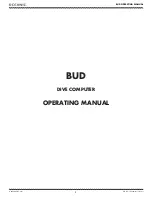
D-10
Return to
2600S-901-01 Rev. C / January 2008
Appendix D: Status Model
Series 2600 System SourceMeter® Instruments Reference Manual
When using a numeric parameter, registers are programmed by including the appropriate
<mask>
value, for example:
*ese <mask>
status.standard.enable = <mask>
To convert from decimal to binary, use the information shown in
. For example, to set
bits B0, B4, B7, and B10, a decimal value of 1169 would be used for the mask parameter (1169 =
1 + 16 + 128 + 1024).
Reading registers
Any register in the status structure can be read either by sending the common command query
(where applicable), or by including the script command for that register in either the
() or
print(tostring())
command. The
print()
command returns a numeric value, while the
print(tostring())
command returns the string equivalent. For example, any of the following
commands requests the Service Request Enable register value:
*SRE?
print(tostring(status.request_enable))
print(status.request_enable)
The response message will be a decimal value that indicates which bits in the register are set. That
value can be converted to its binary equivalent using
. For example, for a decimal value of
37 (binary value of 100101), bits B5, B2, and B0 are set.
Status byte and service request (SRQ)
Service request is controlled by two 8-bit registers: the Status Byte Register and the Service
Request Enable Register.
shows the structure of these registers.
Status byte register
The summary messages from the status registers and queues are used to set or clear the
appropriate bits (B0, B1, B2, B3, B4, B5, and B7) of the Status Byte Register. These summary bits
do not latch, and their states (0 or 1) are solely dependent on the summary messages (0 or 1). For
example, if the Standard Event Register is read, its register will clear. As a result, its summary
message will reset to 0, which in turn will reset the ESB bit in the Status Byte Register.
















































